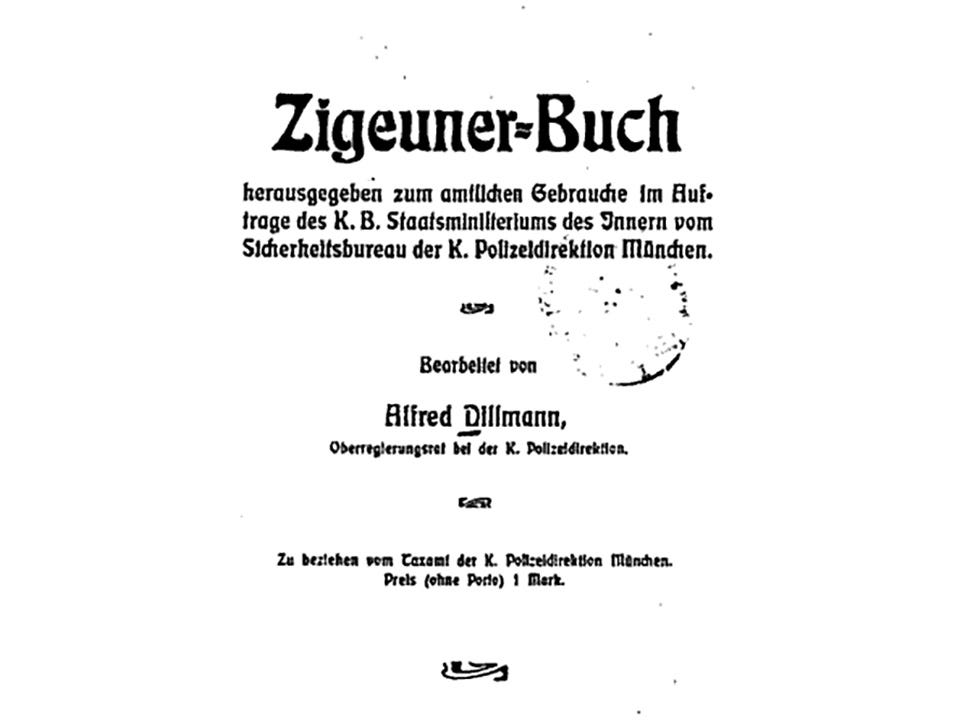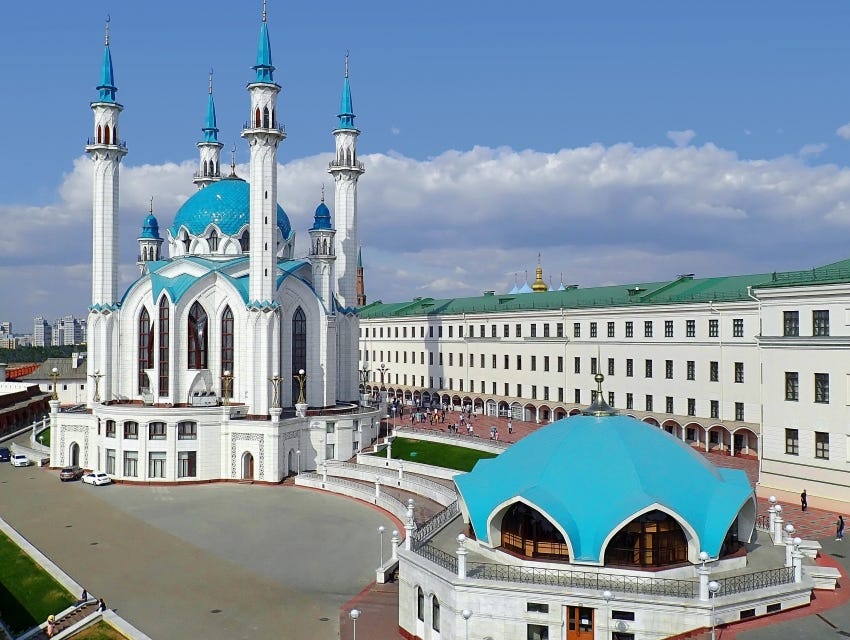BEFORE PROCEEDING
Please help aid my friend Deema and her family’s escape from Gaza to safety in Miṣr by supporting their GoFundMe. Whether you do so through donating to it yourself, or simply sharing the link to it.
They have a big family and are so close to their goal.
!الحرية لفلسطين
I was about seventeen (17) when I first read Leigh Bardugo’s SHADOW AND BONE, and after approximately the 7th mention of “kefta”, I just about chucked the book across my room, but I couldn’t, given it was a library borrow.
However, prior to that, I had read and, admittedly, more-or-less enjoyed SIX OF CROWS, though I was severely disinterested in its sequel and never got around to it. By the end of this essay, I’m hoping you’ll understand why I never will.
Because that, is where our story begins.
While my teenage self really liked the vibe of Kaz (who I now cringe at as an adult), and I wanted nothing more than for Nina to stick a shiv into Matthias, one character who captivated my ideological mind was Inej.
Fun fact, I only recently found out that that is apparently the pronunciation of her name. Since she was from Ravka—Bardugo’s fantasy Russia (ew)—I thought her name was supposed to be “иней”, as in “frost” or “rime” in Russian, which is transliterated exactly as her name is spelled in text: (ínej). Something tells that may’ve been precisely the intention, Anglophones just couldn’t be bothered.
What interested me most was her—Inej’s—culture; her ethnic group named “Suli”. It interested me because I recognised it immediately for what its coding, whether subconscious or actively intended, was.
Ruská Romá.
Russian Romani.
And yet, people weren’t really talking about it.
Obviously, they were, but far from prominently or seriously enough, especially for my liking.
I do a lot of ethnic minority activism work, and Romani people are objectively the most marginalised group of people worldwide, in Russia absolutely so. Romaphobia and anti-Romani violence are prolific, and erasure is damn-near a given.
Leigh Bardugo, through her books, contributes to century-old violence against Romani people.
So, let’s discuss.
Disclaimers
Disclaimers are a must here. The most important being that I am what Romani people call a “gadji”. That means I am non-Romani (that translation specifically means “non-Romani woman”—the “gender-neutral” gadje isn’t actually grammatically correct as a singular in Romani ćhib (Романы́ чиб), the Romani language; keep in mind though that I do not identify as a woman). And I am very non-Romani. I’ve done extensive genealogy for myself and there’s zilch nada from even the general region. The closest we got was Tajikistan and even that is way off. With that, I do not have personal lived experiences of Romani people. I grew up around Ruská Romá as I was raised in the hinterlands—like actual hinterlands; I’m talking no plumbing, no running water, no public transport, no church, sometimes no electricity kind of hinterlands. And even though I knew, and still know, a little Xaladitka—Russian Romani language—I am still very much an outsider, and everything I say here should be received with that in mind.
This is not going to be like my anti-Russian and anti-SWANA Orientalism videos wherein I had personal stock as a mixed Baltoslav-Anatolian-Central Asian-whatever. I have been educating myself on and heavily participating in Romani civil rights advocacy for years, but I am not an authority. I’m like barely out of my teens, also.
This isn’t going to be surface level, but it’s not going to be especially deep waters either, as I have a thesis.
And before we go down in this submarine, you’ll probably hear me flip-flopping between different pronunciations of the same word several times. I will be, at least at times, Anglicising the Xaladitka terminology I know. At all other times, I’ll be using said Xaladitka terminology in the raw. The Romani language group is extremely vast and diverse, and pronunciation from one Romani language won’t necessarily be transposable onto another. “Románi” isn’t technically even the “correct” pronunciation, it’s Romaní. However, I am also working around the language of this essay, which is English, so I will also be at times forced to opt for quote-unquote “incorrect” pronunciation in order to make what I’m saying flow.
Keep that caveat in mind also as we proceed, which we’re doing right now.
Who are Romale?
Encompassing a vast number of subgroups and communities, the Romani people are Indo-Aryans suggested through linguistic and genetic evidence to originate from the Ancient Ancestral South Indian (AASI) of the Indian subcontinent. While Romale are thought to originate in central or western India, they saw a migration to and eventual ethnogenesis in the northwest, particularly the Rajasthan and Punjab regions.
I highly recommend watching this video about the origins of Romale. It’s short but informative, and presented by a Romani person.
The Romani westward migration from northern Hindūstān to Europe is speculated to have occurred circa 1000 CE, with their arrival in Europe marked between the 13th and 14th centuries, whilst their migration to the United States occurred in approximately the 19th century. The two prevailing theories as to the exodus of Romale from India are:
1: displacement due to the invasion of northern India by Maḥmūd of Ghazni.
and 2: caste-based oppression.
As already alluded to, the Romani language, or Romani ćhib, is what’s called a “macrolanguage”—think of it almost as an “umbrella term” encompassing multiple dialects and varieties. Some of these include Lomavren, Kalderash, Džambazi, Lovari, and, of course, Xaladitka, the language of the Ruská Romá.
There is a word by which you might better know Romani people.
I do not and will not say that word, but I will place its definition here with the word censored but legible. Trigger warning.
This word is a racial slur, derived from “Egyptian”, as Europeans first misconstrued Romale as hailing from Miṣr—“Egypt”. During the 1971 World Romani Congress, the first to ever take place, the usage of any exonym in reference to Romale, including the g-slur, was voted against. Going forward, I will be referring to this term as “the g-slur” or “the g-word”, and in any literature quotation wherein I insert [Romale] etc. within square brackets assume that I’m substituting said g-word.
Before we go on, it’s important to bring up that Romani people are very frequently conflated with other communities such as the Ashkali, Balkan Egyptians, Dom, Irish Travellers, the Yenish, and many others, including Dalit. Ashkali and Balkan Egyptians in Kosovo, for example, while not being considered “gadje”—non-Roma—by the Romani, generally reject being classified as Romani, though some Ashkali speak Romani ćhib.12 3
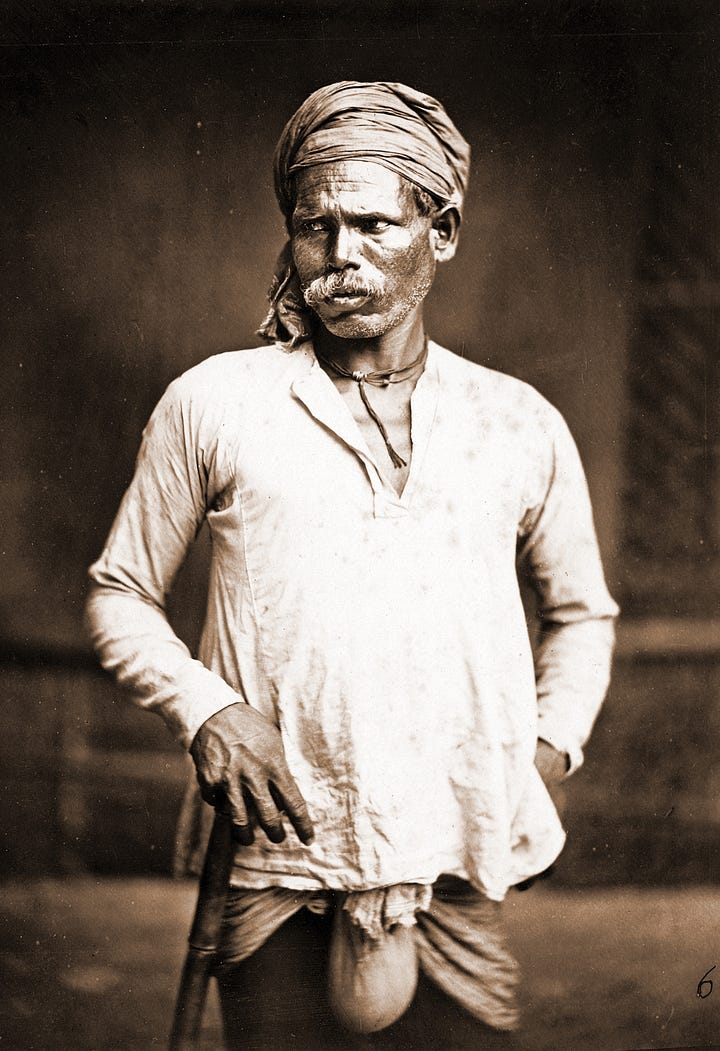
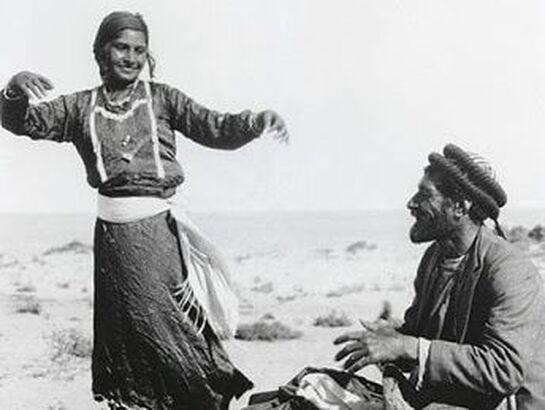
The Ḍoma (डोम) are a drummer and travelling musician and dancer class still residing in India as the Dom. Their title even stems from the Sanskrit डमरु (ḍamaru), for “drum”. Since British Colonial India to now, these people are considered “Dalit” (दलित) in India, people who used to be called “untouchables”: the lowest castes of society. We can see that in the words of the British Raj (rest in piss) who had called them a “criminal tribe”.4
The Dom caste (डोम), while thought to be the origin of Romale—as in who Romale likely were prior to exodus (“Ḍoma” (डोम) is even thought to be where the term “Roma” comes from)—is not, in our modern understanding, a Romani people.
The Ḍom (الدوم) group—speakers of Domari—are descendants of the Dom caste who left India before Romale, and migrated onward to SWANA, notably Jordan and Palestine, and are often conflated with Romale and suffer from anti-Romani sentiments, but are also not self-identified as Romani.5

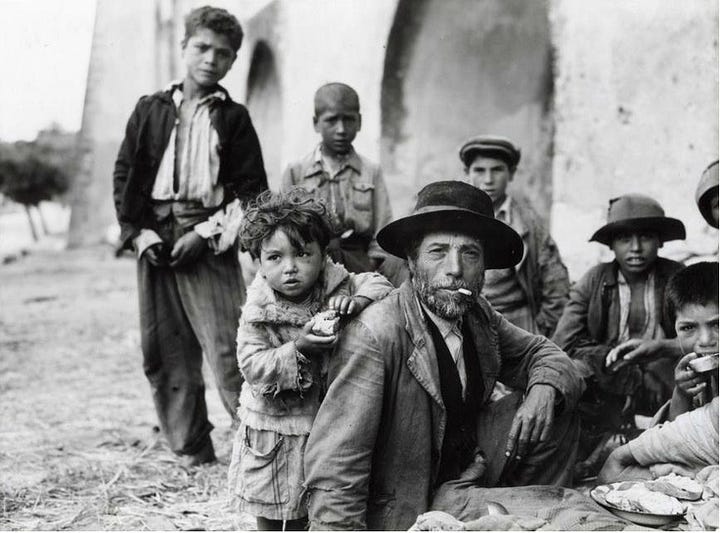
Irish Travellers (Mincéirí) practice a nomadic lifestyle very similar to traditional Romani people, but are not genetically related to Romale. They have their own language too, called “Shelta”, unrelated to Romani ćhib, though some Romani words have been incorporated over the years.
Finally, the Yenish are a distinct, historically nomadic group residing across northwestern mainland Europe, most notably in Germany and Switzerland. The term “traveller” was often applied by gadje Europeans to Sinti, Roma, and Yenish, and while the Yenish are not genetically “Romani”, they have historically faced similar if not the same persecution as Romani communities.
In terms of what may be dubbed quote-unquote “Romani-proper”, we can break them down into broad but still diverse and often overlapping groups thusly:
Roma: Balkan, and central and eastern European Romale.
Sinti: northwestern European, as well as French and northern Italian.
Calé of Spain and the Iberian Peninsula.
Kalé of Finland and Wales.
Manouche: French, as well as Piemontese (northern Italian), Sinti.
Romanichal: English and otherwise United Kingdom Romany.
Lom: Armenian and Kavkazian Romani.
Zargari of the Zargar (زرگر) village within the Basharyat-e Sharqi dehestân (rural district) of Irân.
Kalbelia: a snake-charming tribe native to Thar Desert of Rajasthan, India, and who are oft’times considered the quote-unquote “original Romale”, as in Romale who stayed in the Romani ancestral homeland.
And many, many others, including subgroups and mixed populations.
Importantly, Roma and Sinti are not interchangeable. Yes, they are both Romani communities, but they are still distinct communities.
Furthermore, “Roma” is often used synonymously with “Romani”. This is technically incorrect. Roma are Romani. All Roma are Romani, but not all Romani people are Roma. I will be rectifying this conflation instead, as I have already been doing, with the usage of the term “Romale”, as referenced in the Kalderash–English Dictionary compiled by the late Romani Canadian professor and activist Ronald Lee,6 as well as what is the corresponding Xaladitka word: рома́лэ (romálɛ).
Keep in mind, once again, the broadness and diversity of Romani ćhib, though.
Importantly, as I try to have this discussion be as streamlined as possible, I will inevitably be forced to omit certain nuances. I know. I am aware. I recommend going out and doing your own supplementary research, as it will simply not be possible for this essay to be exhaustive, especially with it having a thesis and fulcrum, that being Romani coding in modern, fictional, mostly fantasy, literature, with L. Bardugo’s Grishaverse as the case study.
Content Warnings
Romaphobia, racism, xenophobia, casteism, racial and ethnic discrimination, discussions of genocide and the Holocaust, slavery, sexual and gender-based violence, classism.
I wanted to append some words beyond just some soulless list of trigger warnings.
This will be an incredibly heavy and hefty subject to tackle—the heaviest and heftiest I have tackled to date. In the video form of this essay, everything will be time-stamped for your viewing ease. We will be reading legislation and a lot of racist rhetoric. If you are non-Romani, like myself, I’m not going to ask you sit through it, but I will require it. In order to understand the part of this essay wherein I discuss modern fantasy literature, including the dogwhistles therein, you need the historical context, and I know for a fact that is something a massive chunk of the non-Romani population does not have.
If you intend to come at me sideways, to spew some bigoted or denialist garbage in my space, know that my trigger finger is very itchy and you will be deleted and blocked and reported so fast. Fvck around and find out.
If you are Romani, please, I beg you, take care of yourself and do not proceed with any of this content if you feel even a little not up to it. If you would like, you can skip directly to the part where I discuss Romale in media, particularly in the Grishaverse, but even then, don’t feel like you are obliged to. You aren’t. You know all of this—you don’t need to hear any of it from a gadji who is explaining it to other gadjikane.
Явэн састэ.
A Brief History of Anti-Romanism
The Romani people are dubbed, “the world’s most populous marginalised community”.
And indeed, we would be here for days if I were to delineate every single way in which Romani people are oppressed. Instead, I will speak, in broad terms, on the most pertinent events of Romani history that encapsulate this people’s oppression. Those key events are:
1: Romani marginalisation all the way from their arrival out of Hindūstān to the current day.
2: Romani slavery.
3: the Samudaripen.
Romani Marginalisation
The worldwide population of Romale is estimated between 2 and 12 million, but the François-Xavier Bagnoud Center for Health and Human Rights at Harvard University estimates as many as 15 million.7
Why the absurd range?
A significant portion of Romale refuses to register themselves on population census due to persecution and discrimination.
So… Why is that?
The arrival of Romale in Europe from their northern Indian homeland took place in the early to mid-1300s via Irân, Armenia, and what is the modern-day settler colony of Türkiye. A second wave of Romale reached Europe in the 15th century from Irân, through North Africa, and into the Iberian Peninsula. These two waves of Romale then converged in mainland Europe.
Consciousness of Romale, or populations speculated to likely be Romale, came in 800 CE Thrace in the form of the plural term atsíngani (ἀτσίγγανοι), from the Byzantine Greek athínganos (ἀθίγγανος) for “untouchable”. Recall my reference to the Dalit caste of India.
Franciscan friar Simon FitzSimmons (Síomón Mac Síomóin) described in his 1323 work, The Journey of Symon Semeonis from Ireland to the Holy Land,8 a people resembling “atsíngani” living outside of the Cretan city of Iráklio (Ηράκλειο). Quote:
“These people rarely or never stop in one place for more than thirty days, but always, as if cursed by God, are nomad and outcast. […] they wander from field to field with small, oblong, black, and low tents, like those of the Arabs, and from cave to cave, because the place inhabited by them becomes after the term of thirty days so full of vermin and other filth that it is impossible to live in their neighbourhood.”
In that book, he also described atsíngani—who are suspected to be Romale, so I shall be referring to them as such going forward—as “the descendants of Cain” (קַיִן/قَايِين/Κάϊν)… Ya know…? The Abrahamic figure often interpreted as the first murderer…? Product of the Anglo-Norman invasion of Ireland, everybody.
In 1360, the fiefdom Feudum Acinganorum was established in Kérkyra, Greece, wherein the primary people exploited for slave labour were Romani. We will discuss the enslavement of Romale in a later subsection which is why I am being rather brief with it here. Donald Kenrick in his book Historical Dictionary of the [Romanies]9 details endless atrocities Romale were subjected to in Europe since their arrival, including a 1510 order of mass-execution of Romale in Switzerland, with similar legislation passing in England with the Egyptians Act 1530, in 1589 Denmark, and in 1637 Sweden, on top of endless orders of expulsions of Romani people from various European cities from Italy to Spain to Germany to Portugal.
David Crowe in A History of the [Romale] of Eastern Europe and Russia10 describes an anti-Romani pogrom in Augsburg, Germany, instigated by the declaration of the Imperial Diet—the deliberative body of the Holy Roman Empire—that quote “whoever kills a G-slur will be guilty of no murder”.
Louis XIV (14th) of France forbade the residence of Romale in France in 1660, and Portugal began deporting its Romani population to its Brazilian colony in 1685.
Then, 1758 Hungary saw an introduction of programs aimed at assimilating Romale into Hungarian society which included forceful removal of Romani children from their parents in order for them to be raised by non-Roma.
Ooh! Ooh, I’ve seen this movie before(!)
Similar removal policies were adopted across Germany, whilst forced sedentarisation of Romale either via legislation and settlement laws such as in Russia and Poland, or through outright banning of nomadism as in Serbia, popped up systematically across Slavic countries.
During the post-war period, Romani women under the Soviet Union, and within other communist nations of Central and Eastern Europe, were subjected to forced sterilisation in order to reduce and control the Romani population. In Czechoslovakia they were dubbed a “socially degraded stratum” (recall the Dalit caste of India again) and Bulgaria banned the usage of Romani ćhib.
You know what?
Instead of rapid-firing-off absolute atrocities at you, let me delve a little bit deeper into Romale within my paternal and my maternal homelands, as I have a lot of information to impart apropos of that, as you can imagine, and both perfectly embody the predominating gadje attitude towards Romale.
Turkish Romale
Erol Ülker in the 2008 Assimilation of the Muslim communities in the first decade of the Turkish Republic11 quoted Article 2 of the Law on Settlement 1934, or İskân Kanunu, one of several to constitute the Turkish state’s policy on the forcible assimilation of non-Turkish minorities. Article 2 of İskân Kanunu reads in translation thusly:
“People who do not belong to Turkish culture, who are infected with syphilis, who are subject to leprosy and their families, who are imprisoned because of committing murder except political and military reasons, anarchists, spies, [Romale], and who are exiled outside of the country, cannot be admitted.”12
To quote Ülker:
“Apparently, this law linked the admission [as in, into Türkiye] of immigrants and refugees to the condition of affinity with Turkish culture. However, who was to be considered within this category was not specified in this law. Indeed, aside from outside Muslim-Turk population, this category was referring to the non-Turk ethnic and linguistic groups, especially from the Balkans. Although this point was not cited in the original text of the Law on Settlement, another significant official text adopted in relation to this law makes the matter quite clear. This is the Memorandum of Settlement issued in August 1[st], 1926.”
What he’s referring to here is İskâna Ait Muhtıra.
A paragraph down he writes,
“The immigration claims of [Romale] were also to be rejected.”
Article 5 of İskân Kanunu, Law on Settlement 1934, further stipulates that [Romale] of Turkish nationality ought to be settled in an “appropriate” region, whilst foreign [Romale] are to be expelled.
Turkish politician Şükrü Kaya, on June 14th 1934, said at the Grand National Assembly of Türkiye,13
“As I have observed, there are more than a million nomads in our country. Some are semi- or permanently nomadic… There are nomads in the east, the west, and even in Adana, Antalya, Muğla, Burdur, and Isparta. Each of these people is currently in a state of suffering. They are deprived of humane, moral, national, and political education. The benefits of the republic have not yet reached them. Among them, there is neither a judge, nor a doctor, or a teacher. It is very painful to see them being torn away and drifting from place to place like leaves caught in the wind.”14
Şükrü Kaya is one of the architects of the Armenian Genocide.
Gül Özateşler writes in G-word Stigma and Exclusion in Turkey15 that Romale in Türkiye are known to deny their Romani heritage and flaunt Turkishness—or what’s called milliyetçilik—despite Turkish Turks’ frequent rejection of, and Romaphobia towards, Romale. Suat Kolukirik and Şule Toktaş write16 that some Turkish Roma go as far as claiming to be of Turkic nomad background, like Yörük or Tahtacı, which is not true. Moreover, only in 1874 were Turkish Romani Muslims given the same rights as other Muslims in Türkiye. Roma also do not hold the legal status of ethnic minorities in Türkiye due to being primarily Muslim, despite their general treatment as social outsiders by Turkish gadje.
Because of these, and innumerable other, legislation impacting Romale across Türkiye, as well as deeply-rooted societal Romaphobia, the Rumelian Romani dialect is almost extinct among Turkish Romale.
This will probably be one of, if not the, only “fun fact” I’m to auction up in this essay, but Turkish bellydance, something I grew up doing, is very much rooted in Romani cultural dance practices, similarly to Flamenco of Andalusia, actually. That is why I always call the dance I grew up partaking in “Turkish-Romani bellydance”, as opposed to just “Turkish bellydance” because that is simply erasure.
Russian Romale
An Arzamas article written by Надежда Бирюкова (Nadezhda Biryukova)17 very briefly but succinctly overviews why the connection between Russian criminal argot, called Fenya (Феня), and the Romani language was drawn up specifically in the context of the USSR, the RSFSR, and their preceding Russian Empire. There, she quotes, and later presents arguments contrary to, criminalist Василий Лебедев (Vasiliy Lebedev) who, in the 1909 issue of the journal Police Bulletin («Вестнике полиции»), in his article titled “Dictionary of the Thieves’ Language” («Словарь воровского языка»), quote-unquote “observed” the following regarding the Russian criminal argot Fenya. Translated quotation:
“Having familiarised oneself even cursorily with the language of our Russian criminals, it is not difficult to notice that it has a character of internationality… in particular, there are many words and expressions in it borrowed from the language of those tribes who—like the itinerant, vagabond class of professional criminals—are condemned by the will of fate to eke out a miserable existence with no fatherland, as well as to make their living among other peoples, namely [Roma] and Jews.”18
Much of the quote-unquote “scientific” basis for the linkage of Romani ćhib and Fenya is attributable to the work of philologist and Indologist Алексей Баранников (Aleksei Barannikov). Most notably, in 1931, under the aegis of the State Institute of Speech Culture19 itself, Barannikov penned and published the article “[Romani] Elements in the Russian Thieves’ Argot” («Цыганские элементы в русском воровском арго») wherein he made the claims that over 200 such Romani ćhib elements are present in Fenya. And prepare yourself, because this next translated quotation is especially heinous:
“…a significant percentage of criminals emerge from their (Romani) midst. Meeting in detention houses with thieves—representatives of other nationalities, [Romale] predominantly there could pass on elements of their vocabulary…”20
As you can imagine, he was suuups’ into the idea that genetics and culture predetermine Romani crime…
Very alike another infamous country’s treatment of both its kidnapped slaves and subjugated indigenous peoples…
So, throughout his work, Barannikov cited so-called “Romani folklore” and “Ukrainian Romani songs” which allegedly “glorify theft”. These supposed “songs” have since been concluded to most likely not even exist. Further, within folklore which was cited by Barannikov that was actually authentic, the Moscow Institute of Anthropology and Ethnography has concluded that what’s quote-unquote “glorified” is not theft, but barter, and a major theme in said Romani folklore is that some evil-doer has stolen from a Roma the last thing they had.
Recall that this Aleksei Barannikov is a man whose research was endorsed by the GIRK, the State Institute of Speech Culture. For those who don’t know [because, honestly, why would you?], the GIRK was a scientific institution focused on the field of philological sciences in Leningrad (Saint Petersburg), directed by Ukrainian-born Bulgarian pan-Slavist Державин, Николай Севастьянович (Derzhavin, Nikolai Sevast’yanovich), and operating for a whopping 3 years: 1930–1933.
Good. Good good good…
For reference, the Institute of Anthropology and Ethnography which debunked Barannikov operated from 1933 to the current day, was literally formed with the express purpose of discrediting Nazi “race science” (Rassenkunde), and is named in honour of Ukrainian-born Микола Миклухо-Маклай (Mykola Myklukho-Maklay/Nicholai Miklouho-Maclay), an ethnographer and anthropological explorer who opposed blackbirding in Australia, slave labour in Kanaky and the Pacific, and the British and German colonial expansion in Niugini.
I know which institution I’d rather listen to [if I must listen to any].
Romani ćhib linguist who taught Romani ćhib to himself, Виктор Шаповал (Viktor Shapoval), has analysed and debunked much of Barannikov’s “findings” apropos of Fenya’s linkage to Romani ćhib in Power as a lexicographer ([Romani] word in the dictionary of the thieves’ jargon) from volume 13 of Linguistics: Bulletin of the Ural Linguistic Society.21
Shapoval analyses the terminology Barannikov put forward as “evidence” of Fenya’s foots in Romani ćhib, finding instead not Romani words at all, but Latinisms, Hebraisms, and Ofénisms—borrowings from the cant of Imperial Russia’s Ofénya, merchants of small items originally hailing from the village Aleksino in the Savinsky District of Ivanovo Oblast. These individuals are also called коробейники (korobéyniki): peddlers, hawkers, the like. Noticeable is that none of the aforementioned are related to Romale. Shapoval then goes on to detail how much of the rest of the philological reconstructions cited by Barannikov were actually falsifications courtesy of criminologist Сергей Потапов (Sergei Potapov) as published in a 1927 jargon dictionary wherein the Romani words appropriated and cited had nothing to do with Russian criminal argot.
Supposedly “reputable sources” publishing blatantly false and ideologically dangerous information about marginalised minority groups… It’s almost like a couple other movies I’ve seen before!
In the book The Story of the [Roma]: a Novel Outlook22 co-written by late researcher of Romani culture Николай Бессонов (Nikolay Bessonov) with Надежда Деметер (Nadezhda Demeter) and Владимир Кутенков (Vladimir Kutenkov), Bessonov postulates that—
“In the early thirties, there was an attempt to make out of Roma kolhózniki(—communal farmers). It thus became necessitated to ideologically prime society for the idea that it would be much calmer if nomadic people were attached to the land (as in, sedentarised). Naturally, this required ‘scientific’ substantiation of the already-existing opinion about their (the nomadic peoples’) utmost criminality. Academician Barannikov, an Indologist by scientific specialisation, fulfilled the social order—not only in this, but also in all other works apropos of Romale.”23
We see here a continued and deliberate effort to equate Romani people to criminals, and thus marginalise and villainise a group of people which is already vulnerable and has been suffering racism and violence since time immemorial.
Five Hundred Years a Slave
In their essay Five hundred years a slave, Dr Shannon Woodcock, a settler historian specialising in racism and genocide, writes on the 500-year-long slavery endured by Romale. Trigger warning for exonym usage.
“Between 1385 and 1848, every Romani person who entered Wallachia and Moldova, now the southern and northern parts of Romania, became a slave of the state, who could be bought and sold by the clergy or private landowners. All slaves were known as
Țigani, and no Romani person could be free.Țiganwas synonymous with ‘slave’, and slave children and families could be separated for sale at any time—they were not citizens. Any free man could rape any slave woman, and if a slave was ‘damaged’ through [rape] or physical violence, the offender had to pay compensation only to the owner—any child born of a slave belonged to the slave master.”24
Ethnologist and anthropologist Delia Grigore, who at least at the time (2022) was the head of the Amare Rromentza Roma Center in Romania, writes in their article titled Roma Slavery: From Recognition to Reconciliation as follows:
“According to the laws and customs of the land, Roma slaves were excluded from the condition of human beings, being in a state of dependence that was not only economic (like serfs), but especially personal and legal—the worst form of servitude encountered in human history. They were considered chattel, being exchanged, sold, given away, inherited, and subjected to abuse and violence that went as far as rape, torture, and murder by their master.
The Roma family was not recognized as a community structure, but as a method of breeding slaves, akin to domesticated fowl. Slavery has also profoundly affected Roma children, who were separated from their families at the will of their masters, exchanged, given away or sold, often at lower prices than animals, because they were not considered good enough for work.”25
Madinina26-born poet, philosopher, and democratic socialist, Aimé Césaire, wrote thusly in his 100-page 1950 essay, Discourse on Colonialism,27 about the Colonial Western European’s outlook:
“His doctrine […] has the virtue of simplicity. […] the West invented science. […] the West alone knows how to think; […] at the borders of the Western world there begins the shadowy realm of primitive thinking, which, dominated by the notion of participation, incapable of logic, is the very model of faulty thinking.”28
Obviously, this essay is a discourse on colonialism—it’s in the name—and is admittedly rather West-Eurocentric and a tad reductive to the hyper-Western case, as I found being an Easterner reading the essay. However, in this description we see encapsulated the very essence of the dominating hegemony’s actions towards all entities it views as Other, and a loud and clear likeness of Orientalism.
The oppression and exploitation of Romani bodies was justified by the dominating entity—be that Valahia (Wallachia), or somesuch other entity in the given scenario, doesn’t really matter. And it was justified so by positioning Romale as parasitic outsiders. As foreigners. As dark, dirty, diseased, degenerate, and depraved invaders. We witness a very similar pattern of behaviour apropos of the “refugee crises” experienced across the Global North, not just Europe. A sort of white panic. A conspiracy theorist’s frenzied consternation.
It is, above all, supremacist ideology. In the words of—and hold fast now! you might be astonished to hear this citation—Edward Saʿīd:
“[A] white middle-class Westerner believes it [their] human prerogative not only to manage the nonwhite world but also to own it, just because, by definition, ‘it’ is not quite as human as ‘we’ are.”
And in the case of Romale, the Westerner—or at least the European, as Romanians stand very much at the crossroads—didn’t even need to go out of their way to travel to the racialised world in order to subjugate it. The racialised world came to the European, seeking refuge, only to receive violence.
And obviously this dynamic is not exclusive to the West or Europe. We cannot ignore Japanese and Russian imperialism, or the colonisation perpetrated by Turks, China, India, Greece, Khalīji Arabs, or, as I’ve already delineated for you in detail, Romaphobia in Türkiye and Russia. None of these are better or worse than Western European colonisation and imperialism, because regardless of the case, it always boils down to Us versus Them.
And, unfortunately, we were forced to witness exactly how far that ideology led.
Samudaripen
Aimé Césaire in Discourse on Colonialism maintains that:
“…there are sins for which no one has the power to make amends and which can never be fully expiated.”
All these centuries of oppression against Romale culminated in one of the darkest events in human history.
The death toll of the Holocaust, a mass genocide perpetrated by the German government from 1941 to 1945, was 17 million.
The primary victims of the Nazi state were Jews, Romale, and Slavs,29 and while the Slavs suffered the largest losses,30 the Jews and Romale suffered the most targeted persecution and destruction aimed specifically at complete annihilation. What was dubbed “The Final Solution”.
The Romani Holocaust is called “Samudaripen”, or “mass killing”. It is often also dubbed the “Porajmos” for “the devouring”. However, in various dialects of Romani ćhib, especially among Balkan Romale, porajmos is considered to be too similar to the term poravipe, or “rape”, which is why “Samudaripen” is the preferred term, as well as the one adopted by the International Romani Union. In Xaladitka specifically, Кали Траш (Kali Trash), or “Black Terror”, is another applicable term.31
Regardless of what name you choose to impart on it, the reality remains:
The Romani Holocaust was a genocide of the Romani people on the basis of ethnicity.
German historian Karola Fings, in her article Genocide, Holocaust, Porajmos, Samudaripen,32 writes:
“The persecution of Roma under National Socialism [Nazism] was a genocide. This statement is important because a genocide fundamentally differs from other forms of persecution. A genocide aims to obliterate an entire group that the majority society defines as an ‘enemy’. […] Roma, like Jews, were stigmatised as an ‘alien race’ and it was decided to eliminate them permanently from society. This was achieved initially through social, economic and spatial isolation.
In the shadow of the Second World War, physical extermination ultimately became the priority. The victims were selected not because of their individual behaviour but solely because they belonged to the minority. Children, women and men were threatened in life and limb because they were classified as ‘G-slurs’. It did not matter whether they were poor or rich, assimilated or unassimilated, young or old, fair- or dark-skinned. Whole families were systematically registered, deported and murdered.”
The United States Holocaust Memorial Museum estimates the number of Romani victims of the Holocaust to be anywhere between 250,000 and 500,000. Polish-American political scientist Zbigniew Brzeziński postulated the death toll of the Romani to reach 800,000, while Romani scholar and political advocate Ian Francis Hancock, Romani name Yanko le Redžosko, makes an estimate of potentially as many as 1.5 million.
And that is what we know. This number could be even bigger because, again, historically and to this day, Romale often refuse to register as Romani on population census, and you can fvcking understand why.
Samudaripen Memorial Day is August 2nd of every year.
Prior to all that, the Kingdom of Bavaria in particular had developed a rigorous, race-based system for the policing of Romale, so much so that in 1899, München (Munich) had a “Central Office for [G-word] Affairs” devoted to the surveillance of Romani people, including information gathering, and July 1926 saw the enactment of the Law for the Combating of [G-words], Travelers, and the Work-Shy33 which would inevitably also include the Yenish and other itinerant peoples.
Trigger warning
This is where supremacist ideology leads. Death, destruction, horror, trauma, and violence in its most barbaric. To quote Aimé Césaire for the final time:
“Whether one likes it or not, at the end of the blind alley that is Europe, I mean the Europe of Adenauer, Schuman, Bidault, and a few others, there is Hitler. At the end of capitalism, which is eager to outlive its day, there is Hitler. At the end of formal humanism and philosophic renunciation, there is Hitler. […] without his being aware of it, he has a Hitler inside him, […] Hitler inhabits him, […] Hitler is his demon, [and] if he rails against him, he is being inconsistent and [so], at bottom, what he cannot forgive Hitler for is not the crime in itself, the crime against man, it is not the humiliation of man as such, it is the crime against the white man, the humiliation of the white man, and the fact that [Hitler] applied to Europe colonialist procedures which until then had been reserved exclusively for the [Arabs], the [Indians], and the [Africans].”
Rest in piss; I hope your followers hang.
Romale in Fiction
That was admittedly a very lengthy preamble just to get to the part where we talk about Romale in fiction, and this isn’t even where we discuss L. Bardugo!
To make this section at least a tiny bit more bite-sized and digestible, I’m going to give you two, but technically one, brief example of the prevailing anti-Romani narratives in fictional literature and storytelling. I will not be going into a deep discussion of Romani culture—that is not my place, nor is it my purpose or thesis. I will bring it up chiefly as needed, but if you want to genuinely engage with cultural knowledge of Romale, much of which, I will warn you, is closed practice, you can seek that from Own Voices sources elsewhere. I’m a b*tch on the internet.
Romani Stereotypes and Archetypes
Let me quickly run you through some basic Romani stereotypes you see in media.
The fortune teller. Tarot was not invented by Romale, nor is it exclusive, but fortune telling, by and large, was a profession popularised and established by Romale due to societal stratification placing Romani people as so low of a caste, even outside what we view as “caste societies”. While very culturally significant, and often a closed practice, like essentially all of Romani culture, fortune telling was still largely a profession of necessity due to discrimination, especially for rromnja—Romani women, and was still criminalised. We see very frivolous throwing-around of very Romani tarot in media such as Gothikana by RuNyx a book wherein the main character is absolutely not alluded to being Romani (despite very questionable fanart), and which already has a lot of racist undertones, like its sole Black character being a curvy mean girl who is apparently a “btch” because she… suffered sexual violence at an orphanage(??) but I digress. Thus, the fortune teller archetype is now an anti-Romani, Romaphobic racial caricature of a dishonest cheat, a swindler, a liar. This stereotype is then grafted onto the population at large, and we all know what follows after.
Witchcraft. The concept of Romale being witches, or somehow involved in the occult, is a racial, racist, stereotype. Romale are normal people. Once again, I genuinely don’t think all of you believe or realise that about people outside of the West especially.
Kidnappers. It has been a long-prevailing false accusation that Romale abduct babies and children, by which it is obviously meant non-Romani, non-racialised, children, specifically. This was used largely as a fear-mongering tactic against the practice of nomadism, as well as a justification for the expulsion of and pogroms against Romale. This stereotype bears certain resemblance to blood libel, and also manifests in the stereotype that still exists of Romale supposedly being child traffickers, when Romani people, children in particular, are the most vulnerable to trafficking. I don’t think folks know how trafficking actually works (*cough*H.D. Carlton*cough*)
The thief. Due to a history of some of the most extreme marginalisation, Romale were historically forced into pick-pocketing and petty crime in order to merely survive in racist, casteist, classist societies. Naturally, this would be weaponised against them by their oppressors.
Romale have been stereotyped as criminals, beggars, and the impoverished (and therefore criminals once over) throughout a classist and racist history. I assume I don’t need to unpack that for you syllable by syllable.
The sexually promiscuous Romani woman. Just as across colonisation events and throughout the history of Orientalism, the exotification and sexualisation of Romani women has led to direct, deeply-rooted violence. From the rape of Romale during Valahian slavery, to sex trafficking, to fetishism and sexual abuse. The Romani woman’s “mysterious nature” is quoted in shallow justification, generally linkable to their stereotyped nomadic lifestyle (which is not universal to Romale in the modern day, might I add, and Romale were historically forced into nomadism due to all the aforediscussed marginalisation), or on account of the Romani woman’s dark features, or dark skin. As I brought up in my previous anti-Orientalist essay, sexualisation in the oppressor-oppressed or coloniser-colonised dynamic is inherently linked to violence, which is why the concept of “sexual liberation” is not universal in its appearance and can never be applied with a broad stroke. And I mean how many times have you seen the “sexy fortune teller” Halloween costume worn by both white and non-white gadjikane? That is just dressing up as a racial caricature, and yet it’s not taken seriously in the slightest as an act of racism, especially is committed by non-white people. This Orientalist mysticisation of and fascination with Romani culture, Romani women most of all, has also resulted in the creation of a lot of artworks with Romani subjects. It is thus also an act of commodification of a marginalised people who have historically been forced to slavery.
Finally, at least for now, Romale as being nomadic performers, be that in circus, theatre, dance, song, what have you. While yes, that is a historical aspect of Romani culture. Take the Romen Theatre, a Romani theatre in Moscow up until 2021 directed by Russian-Romani singer and actor Николай Сличенко (Nikolai Slichenko). Once again though, much of Romani performance culture was largely developed out of necessity, and this lifestyle is no longer universal on top of all that, once more owing to sedentarisation laws—no matter what Romale did, it was always “wrong”, because that’s the modus operandi of the oppressor. These days, the caricaturised iconography of the “wandering Romani performer” is just another stereotype to plaster onto Romale to exotify and mysticise them.
Keep in mind that all that I just brought up was weaponised as propaganda, fear-mongering, and ethnic discrimination during the Samudaripen (Romani Holocaust). These are not silly, harmless preconceived notions. They carry deep, historical harm.
Now, onto media (finally, emân):
The Hunchback of Notre-Dame
While you might know The Hunchback of Notre-Dame as the whimsical, but kind of terrifying, Disney cartoon, it was originally an 1831 Gothic novel by French author Victor Hugo, and it was…
Bad.
Wikipedia extols it as “the first novel to have beggars as protagonists” which I honestly call palavra seeing as, in parliamentary language, there’s simply no way, but I digress.
The book is pretty different from the cartoon and far more messed up, but what matters is Esmeralda is still there as she is in the cartoon.
Except she’s not.
See, what we find out at the end of Viccy Hu’s booky-book here that Esmeralda was kidnapped by Romale and was therefore not a rromni at all, but a French child born Agnès. She was also 16 but that’s neither here nor there.
It is also revealed at the end of the novel that Quasimodo was the Romani child who was left behind, and in whose place “Esmeralda” was abducted.
Since I assume no one here was comatose when I ran over the basic anti-Romani tropes in media, I’m likewise assuming that we see the problem.
Here we have not just the century-old trope of the Roma who kidnaps a non-Romani child, thus positioning Romale as devious criminals, but also the idea that a Romani parent would abandon their actual child. If we piece two and two together, and I know we can because we’re smart-smarts, this was one of the justifications for the removal of Romani children from their families during the 500-year-long enslavement of Romale in Romania. The false idea that Romani people, Romani mothers in particular, did not have quote-unquote “parental/motherly instincts”. If you need an analogy, it was also the reason why children were removed from Indigenous families in the Americas: white women believed themselves to be better suited for motherhood than racialised women, partly—partly!—because motherhood was equated to femininity, and femininity was only permitted to white women.34
Yet Another Disney Crime
First of all, just to get it out of the way, Disney has a history of violent racism and is currently under boycott for the support and essential endorsement of Israel. Look up the Marvel quote-unquote “hErO” Sabra, and then look into the Ṣabra and Shatila massacre. That’s all I have to say.
So, the representation of Romani people, and Esmeralda who actually is Romani here, in The Hunchback of Notre-Dame of Disney has been controversial and precarious since the movie’s release. I won’t commentate on the more nuanced aspects of this representation, as, once over, it’s not my place, but instead direct you here for Romani insight on it, as well as urge you to do your own earnest research as a people is not a monolith and you cannot take an individual for a spokesperson—that’s literally an act of racism.
I will commentate on, however, the aspects of this movie that are indisputably an issue. Namely being the depiction of the Romani masses throughout the film. Observe:


This is a cartoon (duh, spectacular scholarly observation). As an artist myself, I know the power of semi-realistic illustration style, and what you’re seeing here are century-old racial caricatures. From the weak chins, to the over-sized noses, to the generally “un-pretty” depictions of these largely swarthier people.
Look at how Esmeralda is illustrated:


Gorgeous. Genuinely the prettiest Disney face. But with that comes a problem. No other Romani person is illustrated to look anything like her—she’s even drawn with light eyes, unlike every other Roma around her who is black-eyed. It’s almost a “One of The Good Ones” trope all over again. The “you’re pretty for a brown girl” line. While Romale are extremely diverse in phenotype, this depiction is still very weird when contextualised.
Further, while Esmeralda is definitely not sexually promiscuous in her portrayal, her character is nevertheless designed to appeal to that stereotype.
The cleavage, the sheer material, the always-exposed shoulders…
With the history of Romani subjugation; of the rape of Romani women and girls (and men and boys); of sex trafficking which Romale are not usually the perpetrators of, but the victims of, this depiction is a form of violence. Once again, the concept of “sexual liberation” does not have the same look universally. A historically sexualised, sexually-exploited, and sexually-violated people, a people whose culture leans towards modest to boot, will never be liberated through sexualisation like this, especially considering this cartoon was not made by Romale.
And finally, for this section: Quasimodo is white-washed.
In the original book, racist garbage as it was, it was made explicit that Quasi was Romani, and while the cartoon definitely fixed a bunch of issues, even I’ll admit that, there was no reason for Quasi to be a pale, green-eyed ginger. We literally saw his dark-featured parents. Yes, genetics work strangely, especially when ginger hair is concerned—I’m a scientist by profession; I know that. However, in context, this comes off as a very charged choice by Disney. That’s sort of their m.o.
Romani Culture and the Grishaverse
Here, we finally arrive at Leigh Bardugo’ Suli.
Aren’t you so glad we travelled all this way?
Let’s peruse the fan wiki page to learn more! (I know this isn’t exactly academic scholarship but it absolutely offers a glimpse into the mind of the fans of these works).
Here’s a description of the Suli culture. Verbatim quotation:
“The Suli are a close people who are loyal to each other and wary of strangers. Because they are travelers and have no land, ‘home’ to the Suli simply means family. The Suli do not recognize any kings. Suli belief holds that their ancestors will welcome them in the next world. Some Suli believe in Saints.
Many Suli are carnival performers and fortune-tellers, though some have joined the Second Army and others take on seasonal work.”
How familiar of a description(!)
Let’s break that down sentence by sentence:
“The Suli are a close people who are loyal to each other and wary of strangers.”
Romani culture is notoriously closed and a lot of Roma are wary of gadjikane for all the reasons I outlined previously. Not necessarily the worst sentence ever written.
“Because they are travelers and have no land, ‘home’ to the Suli simply means family.”
Now, the first clause of that sentence is worded really weirdly, and it’s obvious that the writer is applying a very un-indigenous framework to the concept of land ownership on top of the strange verbiage. However, I’m not going to explain to you said concept of land ownership of the Romani people. That’s not my place and not the point of this essay.
“The Suli do not recognize any kings.”
That’s neither here nor there for our context—I simply cannot go into that here.
“Suli belief holds that their ancestors will welcome them in the next world.”
Romale have a very deep and important relationship with ancestors; a lot of Roma I personally know engage in ancestral worship. I also do, but obviously not Romani ancestral worship.
“Some Suli believe in Saints.”
This is a big give-away.
Prior to exodus, Romale practiced Shaktism, a denomination of Hinduism, particularly the worship of Kālī, the goddess of time, the life cycle, power, and destruction.
In as simple of a term as can be afforded, due to persecution the Romani people experienced in Europe in particular, most Romale underwent Christianisation for, as we’ve discussed, survival. However, the Kālī of Shaktism was in a sense “hidden” in who became the Roman Catholic patron saint of the Romani people: Saint Sara e Kâli. “Sara the Black”.

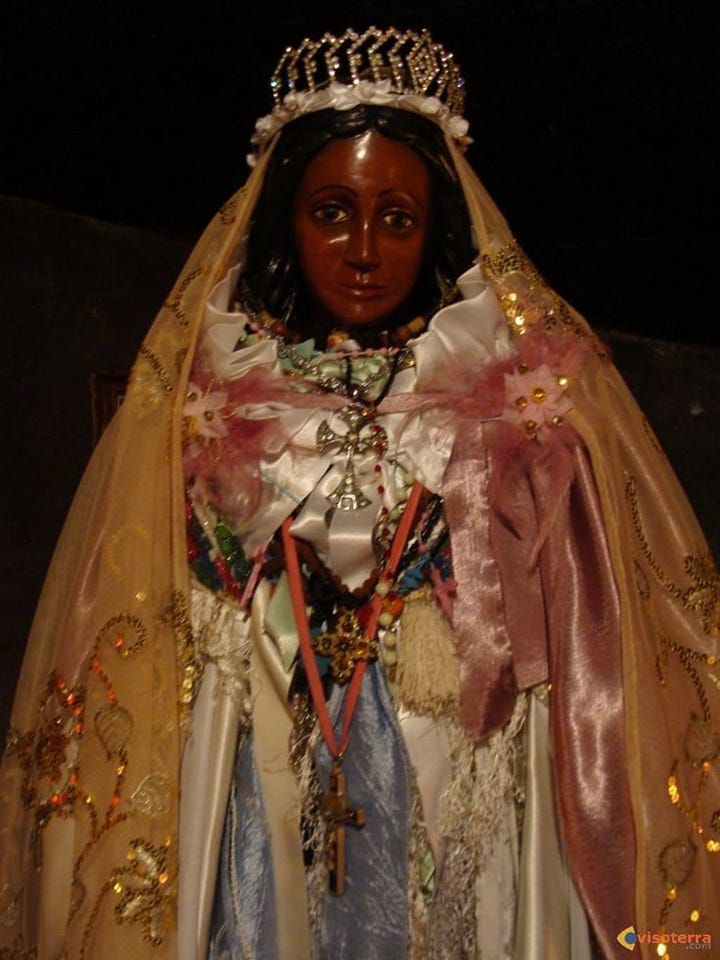
For analogies, think the Afro-Brazilian diasporic religion Candomblé—how the Yorùbá òrìṣà/orixá therein were disguised behind Roman Catholic saints; or the way many indigenous Anatolians like Armenians, Assyrians, and Greek-speakers hid their Christian praxis behind Islamic effigies during the genocides in the Ottoman Empire and moving forward in Turkish history—“crypto-Christians”, as the phenomenon is now known. It is an act of cultural survival.
Here’s the final sentence of that fan wiki paragraph:
“Many Suli are carnival performers and fortune-tellers, though some have joined the Second Army and others take on seasonal work.”
Ignoring the “Second Army” part for obvious reasons, this is word for word a parallel of Romale. In fact, remember how to I said that one of the theories for the Romani exodus from Hindūstān was the invasion of northern India by Maḥmūd of Ghazni? Well, in one “sub-theory”, if you want, Romale were thought to be soldiers who fought against Maḥmūd of Ghazni, contributing to their exodus. On top of that, the language, as well was another title, of the Ruská Romá—Russian Romani—is, as I’ve been saying, “Xaladitka”. You know what that means? “Soldiers”.
Let’s read more of the fan wiki now!
“The Suli, being a nomadic, stateless people, may have been influenced by Romani culture.”
“May”. Sure(!)
“The physical appearances of the Suli, however, appear to have a South Asian influence.”
“However”? What does that mean? Romale are South Asian. This is just blatant ignorance and absence of research.
“In particular, Suli performance seems to draw inspiration from the Bhavai theater form practiced in Gujarat, while the names of known characters resemble Persian and Arabic. As nomads who travel through ‘Russia influenced’ Ravka, the Suli can be associated with Turkic peoples of Middle Asia and more specifically the Tatars who are partially Christianised—which is similar to Inej and her family worshipping Ravkan saints.”
A lot wrong with this.
First of all, as someone who is [admittedly small] part Turkic, let me tell you that there’s nothing Turkic about the Suli. The pinnacle of nomadic Turkic culture is horse-riding, steppes, and the ak and gara öý, or what you might know as a yurt. I mean ffs, the Suli read fortune with coffee dregs which emerged strongly during Ottoman times as qirā’at al-finjān (قراءة الفنجان), kafemandía (καφεμαντεία), soorji gushakut‘yun (սուրճի գուշակություն), fâl qahve (فال قهوه) or kahve falı, among other titles, and is also intimately liked to Romani culture! Turks are a tea people.
Secondly, theatre, circus, all the performing arts, are, once again, historically intrinsic to Romani life due to that usually having been the only place where they were allowed to work due to the worst discrimination a population could possibly experience.
Ravka is also not quote-unquote “Russia-influenced”, it’s just Russia-influenced, and Ruská Romá are widespread cross all of Russian territory, both native and colonised, aaall the way to the Kamchatka Peninsula, and even into China. This is interesting because the Suli in the Grishaverse are also known to live in Shu Han, a country inspired by China and Mongolia. And, finally, we’ve already discussed the Christianisation of Romale, most notably Saint Sara e Kâli. Ruská Romá are overwhelmingly Oriental Orthodox. For comparison, Tatars, including those of Russia, are predominantly what? Sunni. Sunni Muslim, yeah. Tatarstan, the epicentre of the Tatar population of Russia, is over 50% Muslim; only 30% of Tatarstan’s population is Oriental—Russian—Orthodox. Kazan’, the capital of Tatarstan, is most well-known for its Qolşärif Masjid: a Sunni mosque.
But, once again—because gods forbid a btch talks, I. Digress.
The end of this specific fan wiki quotation reads:
“Their (Suli) circuses with tightrope walking resemble Byzantine (located on the territory of modern Turkey) circuses with foreign Asian acrobats of various origins. Later, other elements of Byzantine culture succeeded in Russia.”
Palavra!
As we’ve discussed, circus performance is central to much of Romani culture—what do you think said “Byzantine circuses” were?
Again, a complete lack of critical research skills.
“The mistreatment of the Suli is possibly an echo of their basis on Romani culture.”
Yeah. “Possibly”.
There is so much blatant erasure in this article and in all of the Grishaverse fandom and, by proxy, books.
But here’s what’s especially offensive in this article specifically. Quotes from the Trivia section:
“In Turkic languages, the word ‘suli’ means ‘oat.’”
Yes, Proto-Turkic sulï does mean “oat”, which is reflected in a lot of modern Turkic descendants such as Turkmen süle, Uzbek suli, or even Kalmyk суль (sul’).
However:
Irrelevant.
Again: nothing Turkic about this case. Nomadism does not a Turk make.
“In Baltic languages, ‘suli’ comes from the Russian word ‘zhulik’ which means ‘a rascal’.”
It actually doesn’t. It means “swindler”, “cheat”, “cardsharp”, “petty thief”. Also, what is wrong with you? Who the fvck wrote this? Because if that’s where this word came from, that’s so racist oh my god??
Also, the cited “suli” in “Baltic languages”, does seem to refer to the Estonian suli which is a colloquial descendant of the Russian жулик (zhúlik). Further on that note, there’s the Russian шулер (shúler) specifically for “cardsharp”, a cognate of the Polish szuler which was borrowed from the Czech šulíř and also exists in Romanian as șuler, as well as Armenian, Georgian, and other languages influenced by Russian through colonial expansion. The Russian жулик (zhúlik), in turn, likely arrived through the Tatar сөлек (sölek) [cognate of Turkish sülük] from the Proto-Turkic sül- for “leech”. None of these, however, are Baltic.
I don’t know why Baltic languages was highlighted when the existence of that word within seemingly one (though do correct me if more) Baltic language is through so round-about a means, with the Suli language in the Grishaverse also not bearing any resemblance to any Baltic language.
I guess this is just me thinking which is never a good idea, I’ve found.
To carry on lest we forget our destination:
“In Hindi सूली (Suli) means ‘cross’ or ‘gallow.’”
(It means stake or crucifix (i.e. a cross), especially in the context of Christianity, and “gallow” is not grammatically correct—it’s always “gallows” in reference to the execution method; “gallow” is an obsolete English word meaning “to terrify”)35
“In Kannada language—”
Why is it called “Kannada language”? It’s just Kannaḍa—whatever. Thinking again.
“In Kannada language the word ಸುಳಿ (Suli) means ‘wander.’”36
So… it appears to mean “whirlpool”…
Um…
Okay, errrr…
Let’s move on?
Here’s how the fan wiki page on the Suli language describes it:
“Although the Suli people were based partly on the Romani and various South Asian cultures—”
Oh, so now it is based on Romale(!) Good. Good, good…
“—the real-world inspiration for the Suli language is unclear. Few Suli words are known in the Grishaverse, making it difficult to find derivations for words and similarities between Suli and Romani, and other South Asian languages.
In Shadow and Bone, the ‘Suli dialect’ is very similar to real-world Croatian. The Suli words in Shadow and Bone translate directly the same way from English to Croatian. However, the Suli in Six of Crows and Rule of Wolves no longer maintains this similarity.”
This all indicates a lack of consistency and an author’s general disinterest which, if you recall my words in my previous YouTube video on advice apropos of writing Orientalised cultures and people, is a sign that you should not be writing about a culture or people.
We even see obscure details, like that the Suli often find shelter in caves. That hearkens back to aforementioned Franciscan friar Simon FitzSimmons’ racist recount of “atsíngani”—Romale, let’s be honest—in his […] Journey of Symon Semeonis from Ireland to the Holy Land, that they (Romale)—
“[…] as if cursed by God, are nomad and outcast. After the thirtieth day they wander from field to field with […] low tents, […] and from cave to cave…”
These are things the fandom has noticed—that’s why they’re listed in the wikis. From the persecution of Suli people across L. Bardugo’s world, to their reverence of Ravkan Saints, to their nomadism with caravans (clearly referencing the Romanichal vardo), fortune telling, circus performance, to the land ownership laws enacted against them that are very reminiscent of the USSR’s against Romale, to the Germano-Nordic-coded nation Fjerda’s genocide against the Suli for their stereotyped connection to witchcraft and being quote-unquote “cursed” as if Fjerda is some 1940s Germany knock-off (and we’re still supposed to empathise with Matthias like some “one of the good ones” bvllsht—only gRoWn-aNd-cHaNgEd after he kissy-kissed a witch because gods forbid der Übermensch(!) learns to see marginalised people as humans without having to get his dick hard to one of Them first—rest in piss Nazi, actually~♡).
This is not some accidental coding—Bardugo did not ~trip and fall~ into such an obviously Romani portrayal of her fictional ethnicity. Romani culture, history, and people is very obviously where this author got her inspiration, and yet the Grishaverse fandom seems not privy to this. I recognised the coding immediately because I, again, grew up around Ruská Romá. Not a lot of people can say that in English, especially given how Anglo-catered the Grishaverse franchise is. Everything is made palatable, all edges sanded down, all nuance glossed into something shiny and easy to swallow and that is what makes it so reprehensible. You are taking the objectively most marginalised people in the world and you are diluting them and allowing your audience to speculate in vague verbiage, in the process erasing and obscuring a real oppressed culture and people.
Even with the Suli character of Inej, what do you really know of the Suli?
Before you commenced this essay, what did you really know of Romale? Did you know the truth of the g-word? Did you know about the 500-year-long slavery of a people? Did you know that The Final Solution extended beyond Jewish Europeans? And why did you need a gentile gadji to tell you any of it?
With that, I leave you.37
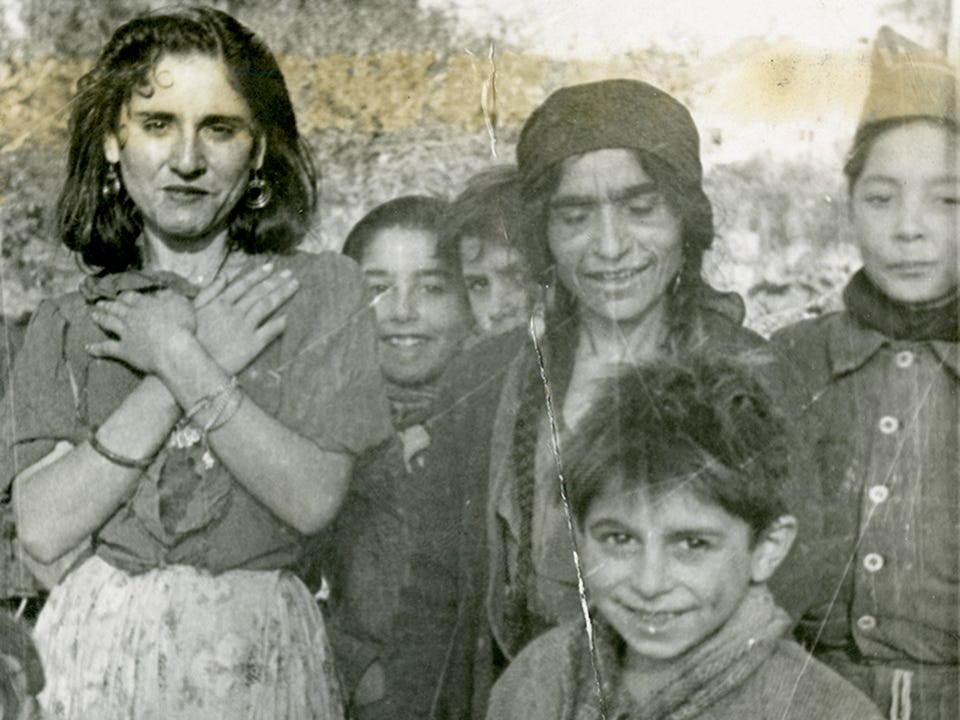
~Sfar~Ⓐ🧿֎⨳
Arifi, M. (2009). Notes made from the Ashkali and Egyptian communities for the shadow report on the Implementation of the Framework Convention for the Protection of National Minorities in Kosovo. The Civil Society of the Ashkali Community.
Minority Rights Group. (2018). Roma, Ashkali and Egyptians in Kosovo. https://minorityrights.org/communities/roma-ashkali-and-egyptians/
Lamaxhema, D. (2019, December 10). Roma, Ashkali and Egyptian women’s invisible lives in society’s “outskirts.” Kosovo 2.0. https://kosovotwopointzero.com/en/roma-ashkali-and-egyptian-womens-invisible-lives-in-societys-outskirts/
Bates, C. (1995). Race, Caste and Tribe in Central India. Oxford University Press.
Dr. Rama Sharma. (1995). Bhangi, Scavenger in Indian Society. M.D. Publications Pvt. Ltd.
Lee, R. (2010). Romani Dictionary: Kalderash - English. Magoria Books.
FXB Center for Health & Human Rights. (2018). Roma at a Glance. Harvard University. https://www.hsph.harvard.edu/wp-content/uploads/sites/2464/2018/03/roma-at-a-glance1.pdf
Corpus of Electronic Texts. (2017). The Journey of Symon Semeonis from Ireland to the Holy Land. University College Cork. https://celt.ucc.ie/published/T300002-001.html (Section 22)
Kenrick, D. (2007). Historical Dictionary of the [Romanies]. Scarecrow Press.
Crowe, D. (2004). A History of the Gypsies of Eastern Europe and Russia. Palgrave Macmillan.
Ülker, E. (2008). Assimilation of the Muslim communities in the first decade of the Turkish Republic (1923-1934). European Journal of Turkish Studies. https://doi.org/10.4000/ejts.822
“Bunun yanında, casuslukları sezilenleri sınır boylarından uzaklaştırmağa ve ecnebi tebaası gezginci çingeneleri ve Türk kültürüne bağlı olmayan göçebeleri, millî sınırlar dışına çıkarmaya hükümetin yetkili olduğu bildirilmiştir.”
Sarı, M. (2011). Atatürk Dönemi’nin İskân Politikasında İç İskâna Yönelik Çalışmalar (1923-1938) [Activities Concerning The Inner Settlement Policy of Atatürk Era (1923-1938)]. Cumhuriyet Tarihi Araştırmaları Dergisi [Journal of Modern Turkish History], 7(14), 87–113. Hacettepe Üniversitesi [Hacettepe University].
“Arzettiğim gibi memleketimizde bir milyondan fazla göçer vardır. Yarım veyahut daimî göçer... Şarkta, garpta, hatta Adana’da, Antalya’da, Muğla’da, Burdur’da, Isparta’da bile göçenler vardır. Bunların her biri bugün muzdarip bir haldedir. Bunlar insanî, ahlâkî, millî ve siyasî terbiyeden mahrum kalıyorlar. Kendilerine cumhuriyetin nimetleri hâlâ yetiştirilememiştir. Aralarında ne bir hâkim, ne bir hekim, ne bir muallim vardır. Bunların böyle rüzgâra kapılmış yapraklar gibi kopup oradan oraya sürüklendiğini görmek, çok acıdır.”
Özateşler, G. (2014). Gypsy Stigma and Exclusion in Turkey, 1970: The Social Dynamics of Exclusionary Violence. Springer.
Kolukirik, S., & Toktaş, Ş. (2007). Turkey’s Roma: Political participation and organization. Middle Eastern Studies, 43(5), 761–777. https://doi.org/10.1080/00263200701422675
Бирюкова, Н. [Biryukova, N.]. Язык воров и язык цыган [The language of Roma and the language of thieves]. Арзама́с [Arzamas]. https://arzamas.academy/materials/13
«Ознакомившись даже бегло с языком наших русских преступников, нетрудно заметить, что он носит характер интернациональности… в особенности же много в нем слов и выражений, заимствованных из языка тех племен, которые, как и бродяжничествующий повсюду класс профессиональных преступников, волею судеб осуждены влачить жалкое существование, не имея отечества, промышляя также среди других народов, а именно [рома́лэв] и евреев».
Государственный институт речевой культуры (ГИРК).
«…из их (Рома́лэ) среды выходит значительный процент преступников. Встречаясь в домах заключения с ворами—представителями других национальностей, [Рома́лэ] преимущественно здесь могли передавать элементы своей лексики…»
Шаповал, В. В. [Shapoval, V. V.] (2004). Власть как лексикограф (цыганское слово в словаре блатного жаргона) [Power as a lexicographer (Romani word in the dictionary of the thieves’ jargon)]. Лингвистика. Бюллетень Уральского лингвистического общества [Linguistics: Bulletin of the Ural Linguistic Society], 13, 115–131.
Деметер, Н., Бессонов, Н., & Кутенков, В. [Demeter, N., Bessonov, N., & Kutenkov, V.] (2000). История цыган: новый взгляд [The Story of the Roma: a Novel Outlook] (p. 152). ИПФ «Воронеж» [Publishing and printing company “Voronezh”].
«В начале тридцатых годов цыган пытались сделать колхозниками. Нужно было идеологически подготовить общество к идее, что будет гораздо спокойнее, если прикрепить кочевой народ к земле. Естественно, для этого требовалось «научно» обосновать уже существовавшее мнение об их предельной криминальности. Академик Баранников, индолог по научной специализации, выполнил социальный заказ—причем не только в указанной, но и во всех остальных работах по цыганской тематике».
Woodcock, S. (2014, March 10). Five hundred years a slave. Overland Literary Journal. https://overland.org.au/2014/03/five-hundred-years-a-slave/#:~:text=Between%201385%20and%201848%2C%20every
Grigore, D. (2022, January 19). Roma Slavery: From Recognition to Reconciliation. Transitions. https://tol.org/client/article/roma-slavery-from-recognition-to-reconciliation.html
Martinique.
Césaire, A. (2000). Discourse on Colonialism. Monthly Review Press. (Original work published 1950)
Unabridged quote (retrieved from page 69 of the ebook):
“And indeed, no personage since the Englishman of the Victorian age has ever surveyed history with a conscience more serene and less clouded with doubt. His doctrine? It has the virtue of simplicity. That the West invented science. That the West alone knows how to think; that at the borders of the Western world there begins the shadowy realm of primitive thinking, which, dominated by the notion of participation, incapable of logic, is the very model of faulty thinking.”
Other victims included queer and disabled people, “asocials” (who often included Roma and Sinti [additionally tagged with a ‘Z’], but largely encompassed poor people, sex workers, nomads, etc.), political opponents or dissenters (including Germans), Jehovah’s Witnesses (largely for refusal to join the military), and an unaccounted-for number of Black Germans.
Up to 8 million Soviets (Russians, Belarusians, Ukrainians); 1.8 million Poles; over 300,000 Serbs and up to 12,000 Muslim and Croat dissidents under Ustaša; up to 25,000 Slovenes.
Thus, anywhere up to and over 10.5 million Slavs, other groups not listed above accounted for.
Mazikina, L. (2007, October 23*). Романы Культуры и Джиипэн [Romani Culture and Life]. Romanykultury.info (*Archived). https://web.archive.org/web/20071023073448/http://romanykultury.info/discussion/discussion.php?row=3
Fings, K. Genocide, Holocaust, Porajmos, Samudaripen. https://www.romarchive.eu/en/voices-of-the-victims/genocide-holocaust-porajmos-samudaripen/
Dawsey, J. (2021, January 25). The Bavarian Precedent: The Roma in European Culture. The National WWII Museum | New Orleans. https://www.nationalww2museum.org/war/articles/bavarian-precedent-roma-european-culture
Ḥamad, R. (2020). White tears/brown scars: How white feminism betrays women of color. Catapult.
सूली (sūlī).
ಸುಳಿ (suḷi).
[End image sourced from] Dawsey, J. (2020, October 10). Fascination and Hatred: The Roma in European Culture. The National WWII Museum. https://www.nationalww2museum.org/war/articles/roma-european-culture





